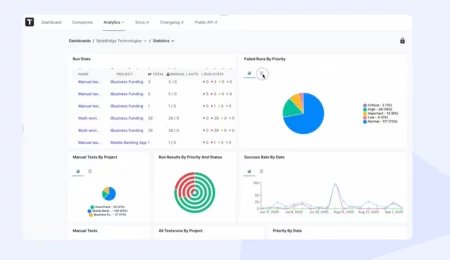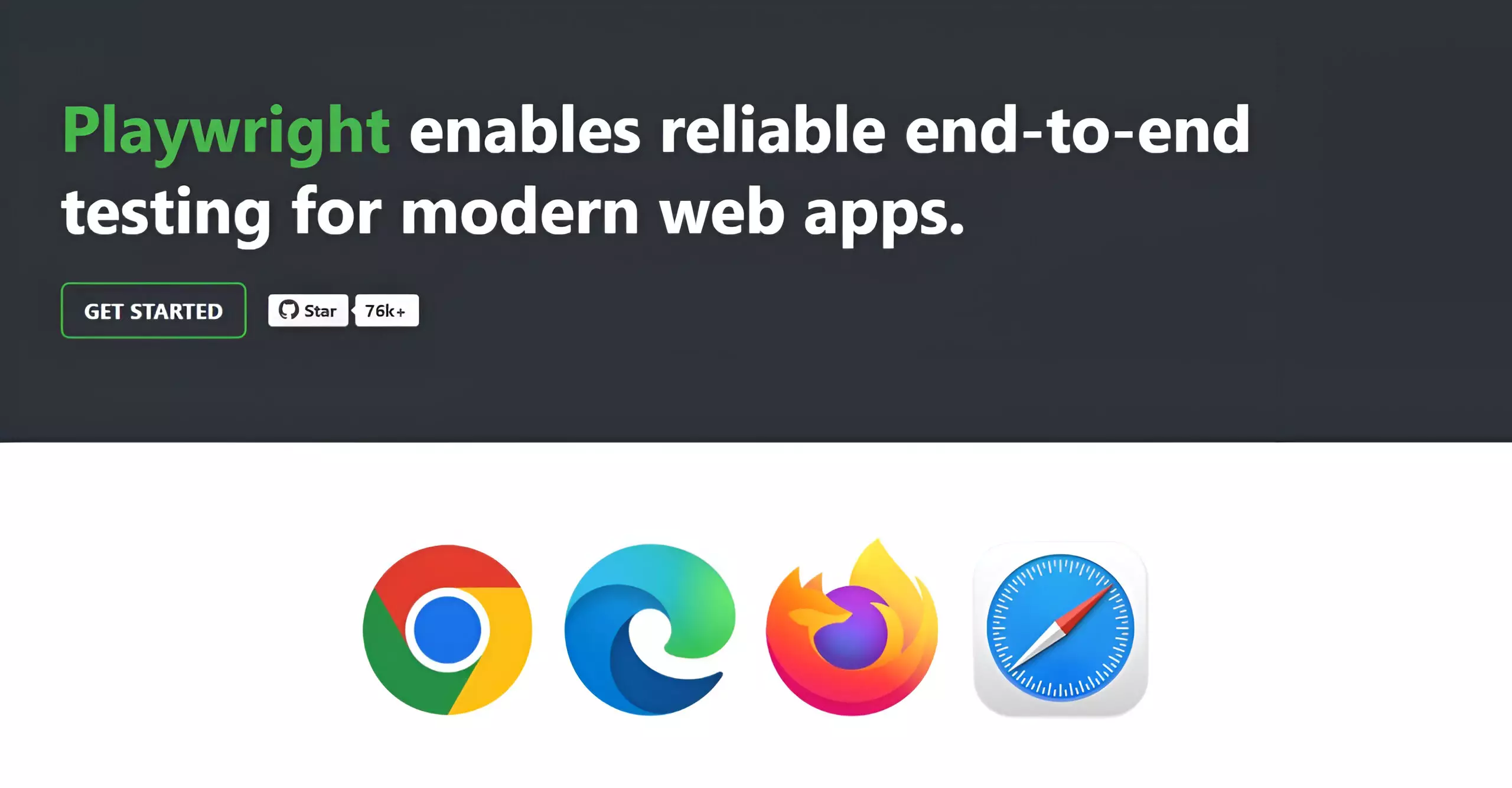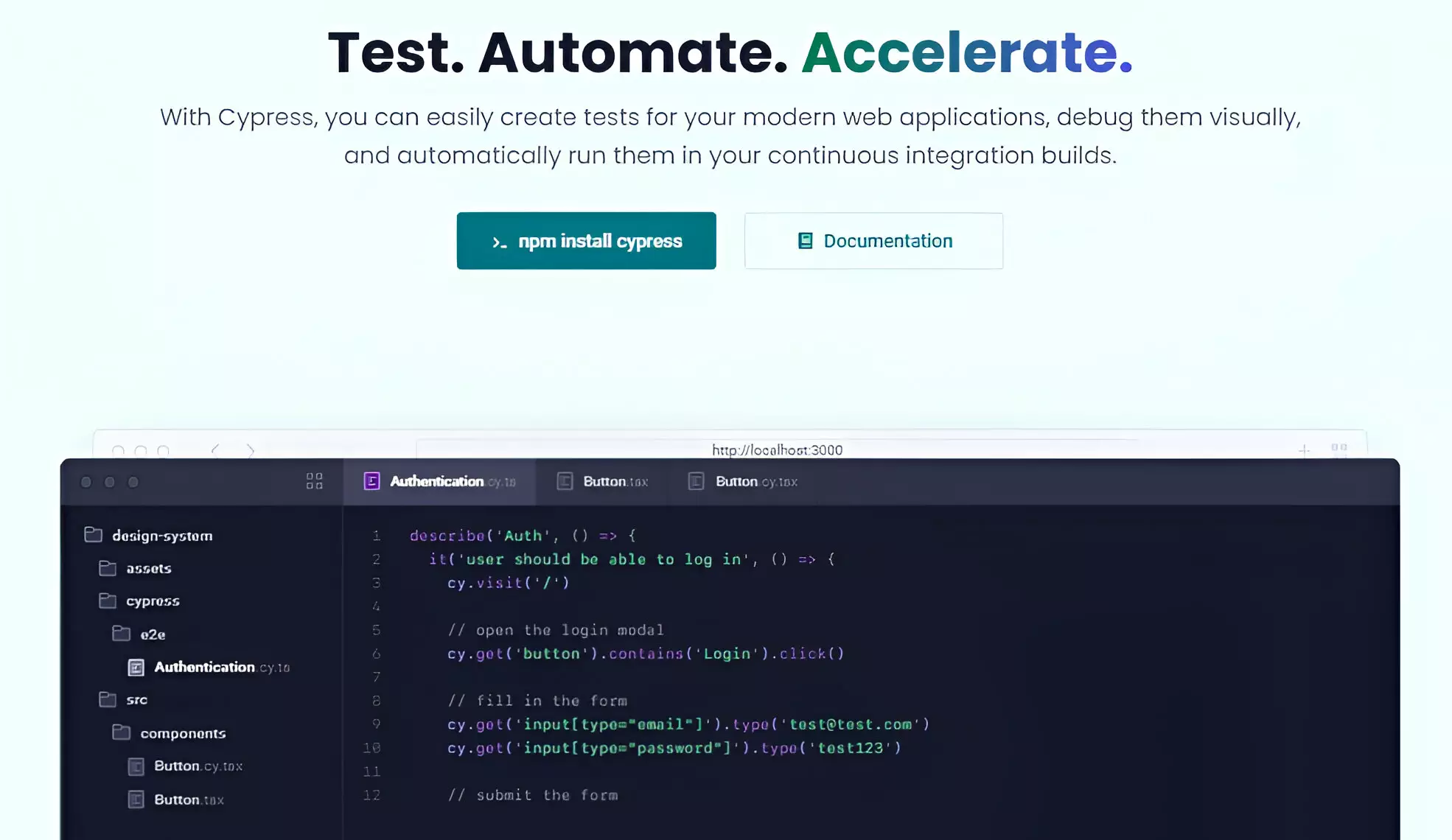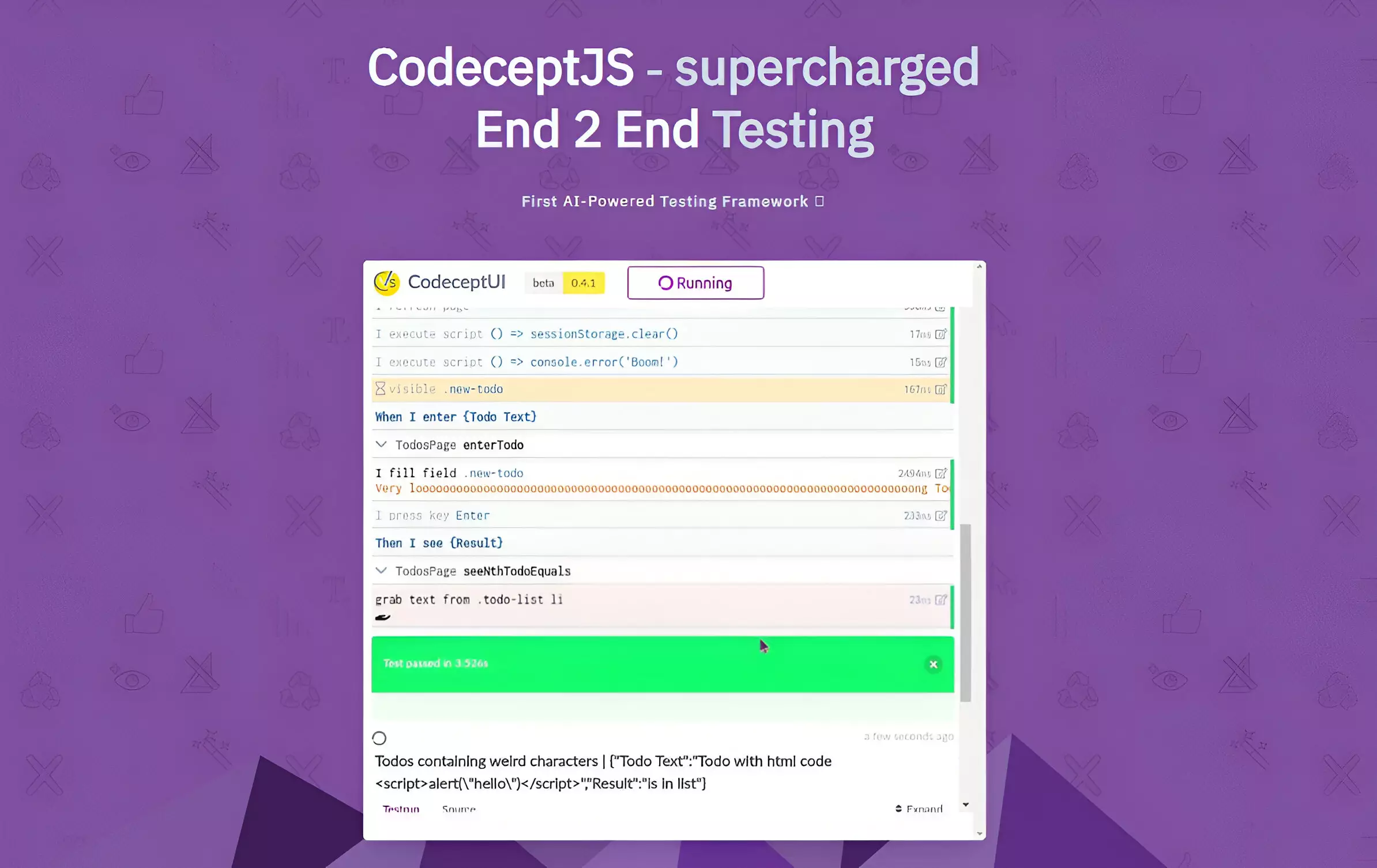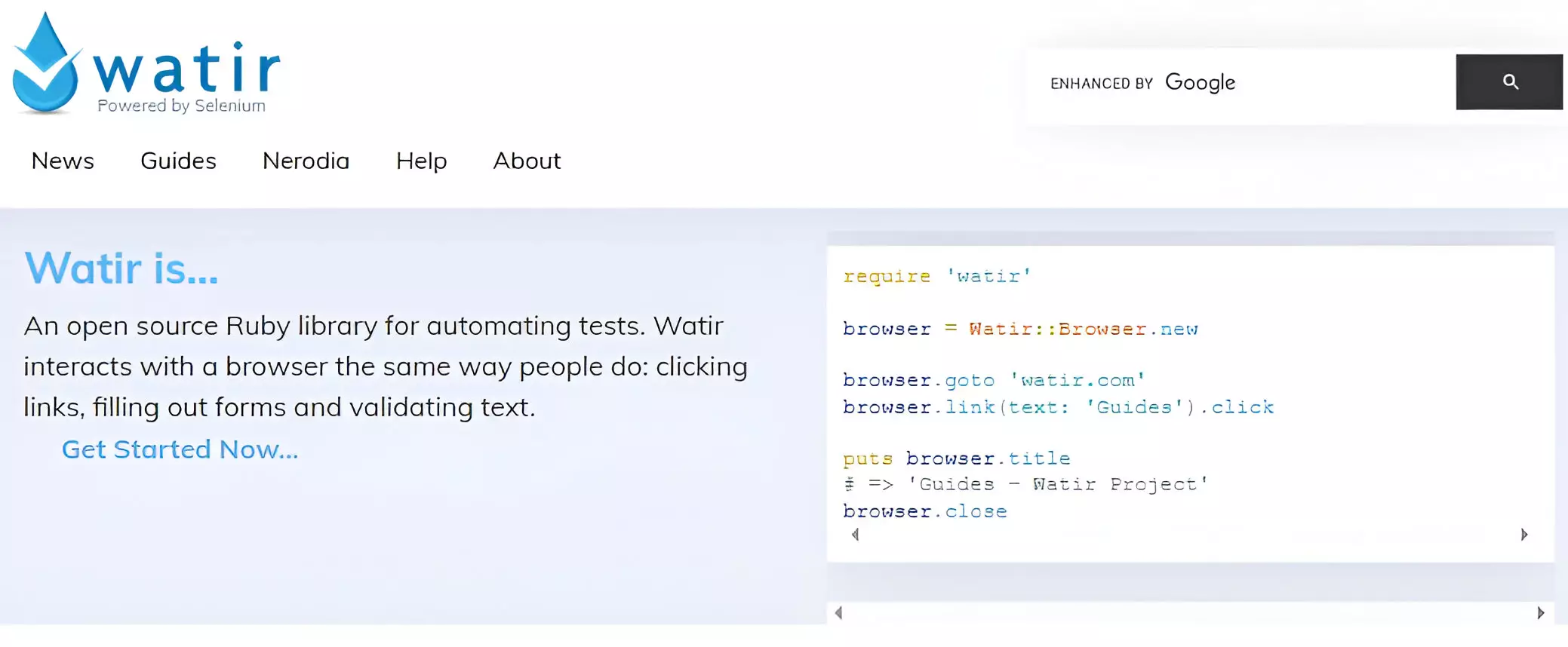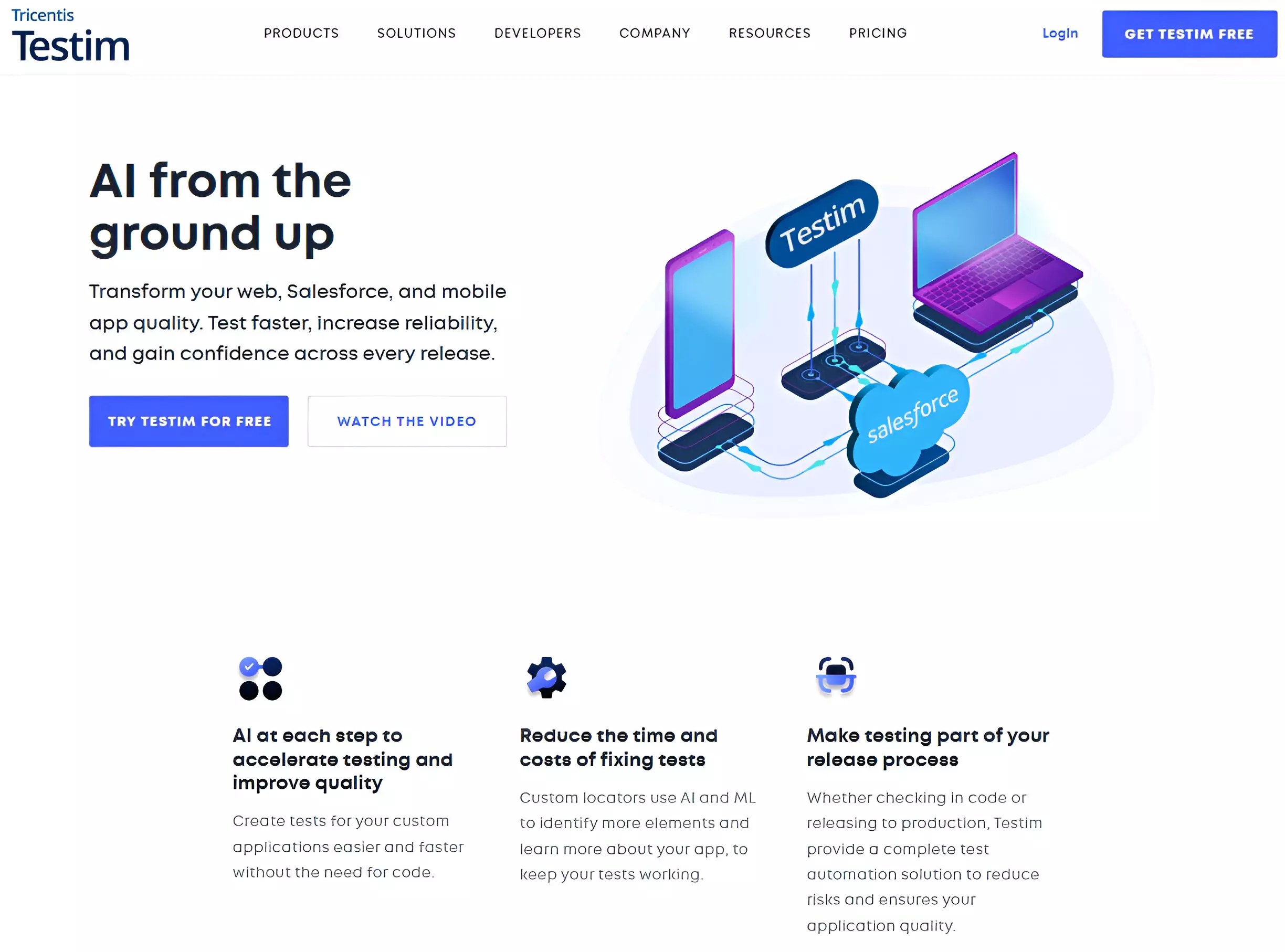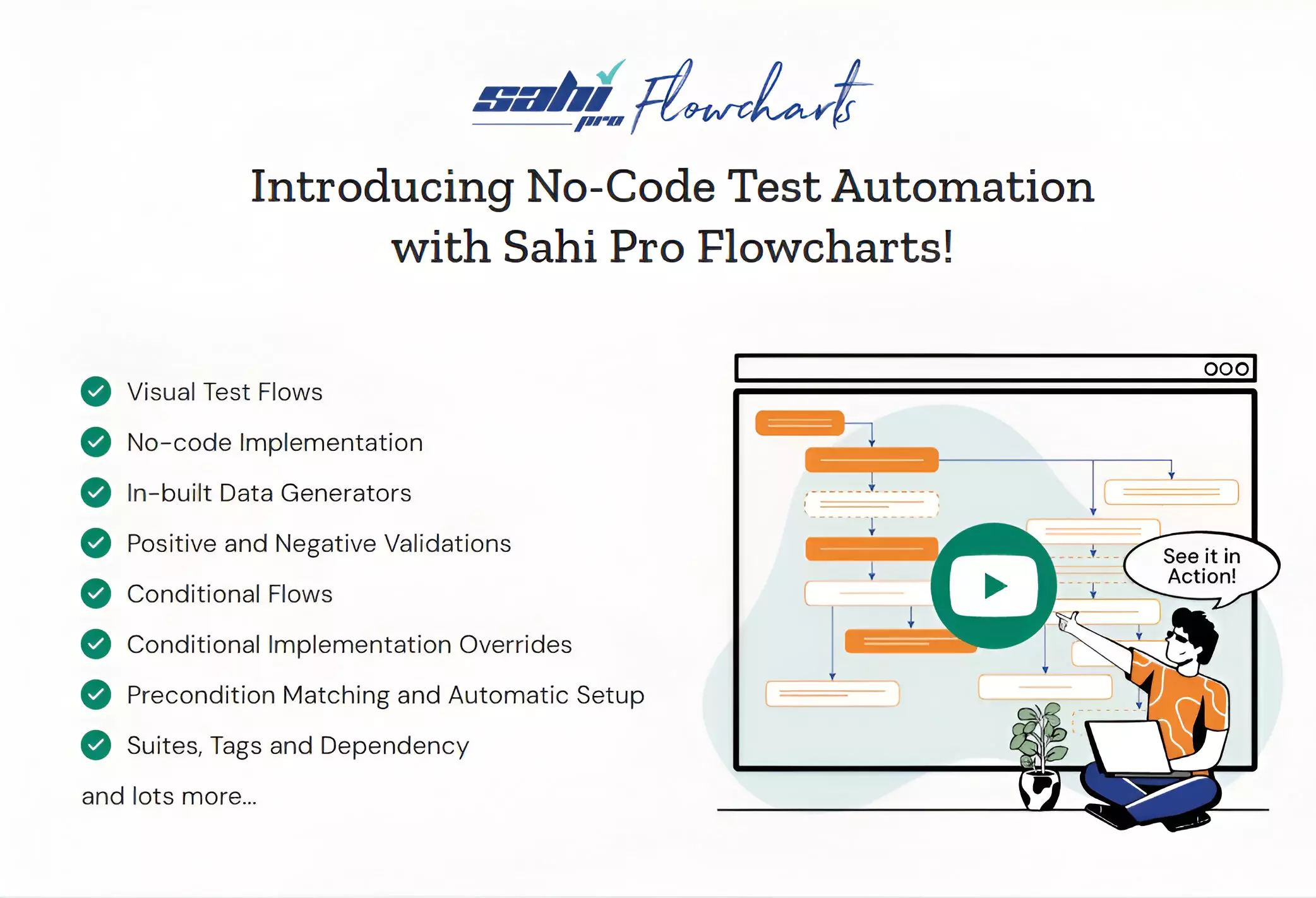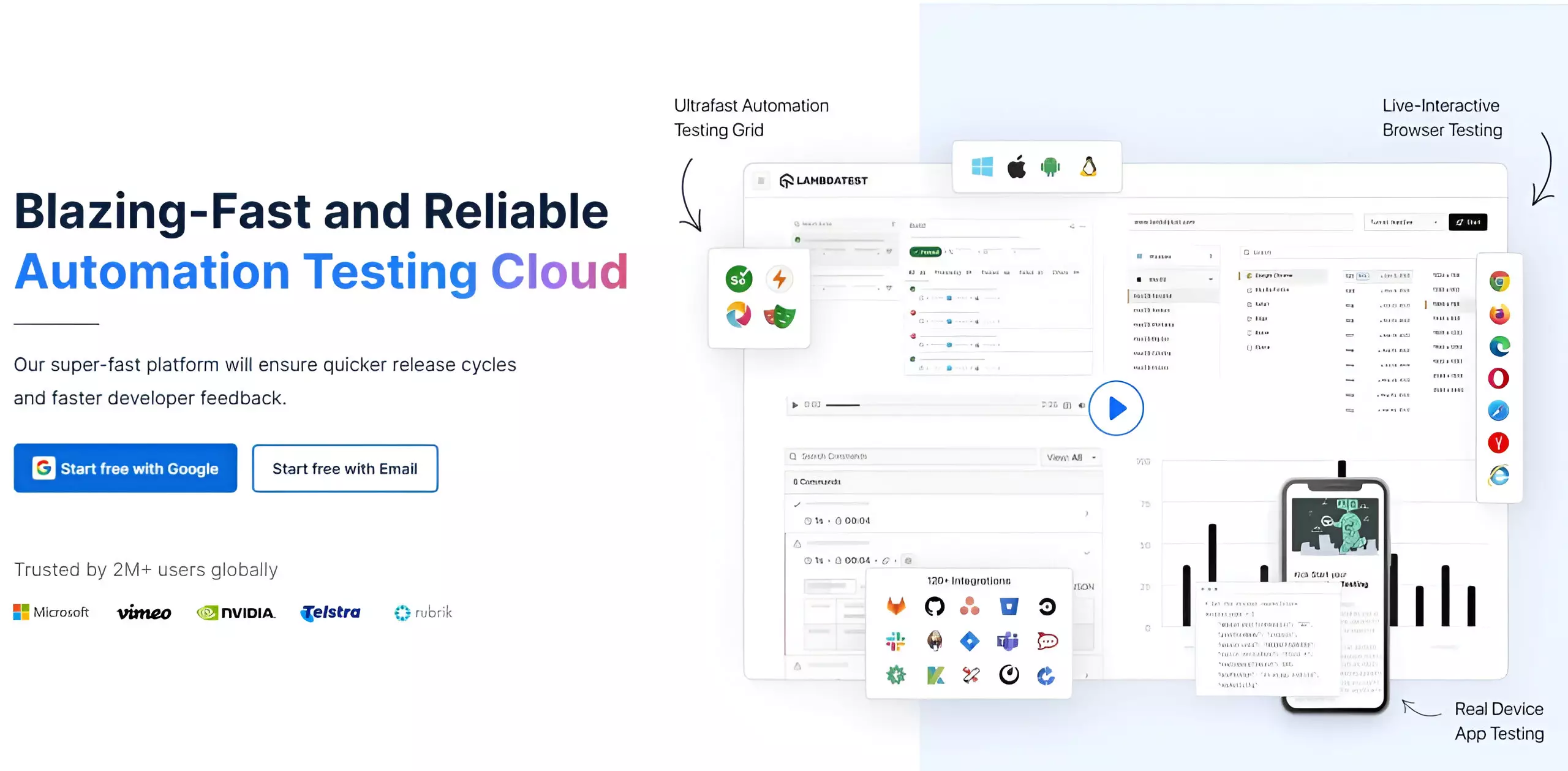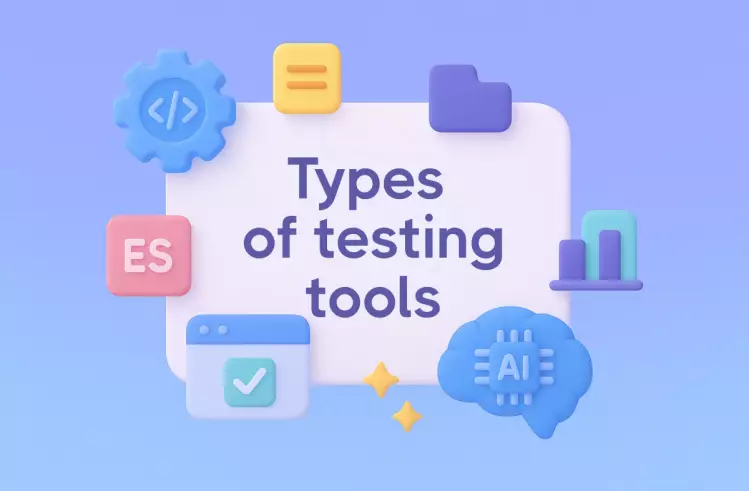The IT realm is a very dynamic field that never stays put. New technologies and ideas about how to tackle this or that problem crop up continuously during the SDLC. Consequently, software developers often introduce code changes on the fly and adjust their methods and approaches in line with shifting requirements and conditions.
Yet, the product should remain fully functional, regardless of any transformations or code changes that occur during the development process. How can you understand that alterations don’t harm the solution’s performance? Regression testing is what can help you ensure it.
This article explains what regression testing is, gives examples of this procedure, describes its types, compares manual and automated approaches to regression test selection, and showcases tools for regression testing that help streamline and facilitate the routine.
Regression Testing Dissected
The very term “regression” implies returning to a former state. Living up to its name, this software testing technique is honed to verify that new code added to the previously tested and currently working mobile or web applications doesn’t affect their functioning.
Typically, regression testing is undertaken after implementing changes to the system, following the addition of a new feature to the application, when the solution is integrated with other products, or after resolving a detected bug.
When conducted by competent QA teams who wield robust software regression testing tools, the procedure accomplishes the following goals:
- Detecting issues early in the SDLC to prevent unnecessary resource spending that is sure to ensue in case bugs and malfunctions persist till late in the software development pipeline.
- Exposing unintentional defects that might have crept in during the development process.
- Reducing risks associated with the application’s transformations, upgrades, and tweakings.
- Ensuring the system’s stability that excludes unexpected behavior.
- Facilitating continuous testing that contributes to the overall software quality of the product.
- Enhancing continuous development and continuous integration, which boosts CD pipelines and ultimately results in web or mobile applications’ shorter time to market.
Let’s see what regression tests look like on real-world examples.
Regression Testing Examples Showcased
Here are some scenarios when regression testing is vital.
Scenario 1. Adding a new feature
A banking app enlarges its functionality roster, enabling users to submit loan applications. A regression test suite is utilized to check that the app’s existing key features (login/logout processes, bill payments, balance inquiries, fund transfers, and others) work correctly and that no disruptions appear in the result of the new addition.
Scenario 2. UI/UX overhauling
A website is redesigned with the purpose of improving its experience and interface. UI regression testing tools are leveraged to conduct comprehensive visual testing, ensuring that all UI elements, forms, and navigation paths continue to operate seamlessly across various devices and web browsers.
Scenario 3. Bug fixing
The QA team discovered that an e-store can’t calculate the total price of the purchase correctly when discount codes are applied. After the bug is eliminated, a regression testing process helps verify that the shopping cart operates properly with and without discounts, whereas related functionalities (like adding items to the cart or proceeding to checkout) aren’t affected.
Scenario 4. Updates and integrations
An insurance company’s database is updated, and a new payment gateway is integrated. All related modules should be subject to out-and-out regression testing to see that data can be accessed and shared seamlessly, transactions are processed properly, and both the UI and backend remain fully functional.
The examples manifest that what is called egression testing is, in fact, an umbrella term that encompasses several procedures of non-functional and functional testing of a software product.
Zooming in on the Types of Regression Testing
When a solution undergoes regression testing, the routine conventionally involves the following types.
1. Corrective regression testing
This is probably the simplest type, as it is conducted when a new feature is added to the solution but no new code changes are introduced, so the QA team executes only the existing test cases and doesn’t add new ones. After the system is proven to function properly, testers can proceed to other types.
2. Selective regression testing
Its use cases are opposite to the previous one. This technique is leveraged to gauge the impact of the new code on the product’s operation. It is called selective because testers select certain units and elements that have been modified and are likely to be affected by transformations.
3. Progressive regression testing
It is applied when QA engineers realize that code modifications necessitate changes in test suites. New test cases are developed in line with specific requirements that alter the product vision.
4. Complete regression testing
It involves re-checking the entire solution. It should be employed after significant modifications or updates that affect all aspects of software functioning.
5. Partial regression testing
This type is just what the doctor ordered for code patches, bug fixes, or minor tweaks implemented in a certain module of the product. Consequently, partial testing verifies only the element to which changes were introduced.
6. Unit regression testing
While performing this procedure, the unit in question is tested in isolation. All its integrations, dependencies, and interactions are disabled to focus only on the particular module.
7. Visual regression testing
The specific province of this testing is the application’s UI. Visual regression testing tools provide screenshots of both current and baseline builds to identify discrepancies in layout, broken visuals, and styling issues.
Each testing type can be performed manually or with the help of specialized regression testing automation tools. Which approach is better?
What are the Pros and Cons of Manual vs Automated Regression Testing?
To gauge the strengths and weaknesses of each testing process, let’s go through the major characteristics of manual and automated test creation and implementation.
- Coverage. The set of manual test cases is pretty small since they require considerable resources, while automated procedures can constitute a much greater test suite.
- Accuracy. Since it is executed by machines, automated regression testing is much more accurate and, unlike manual testing, excludes human errors and inconsistencies caused by the human factor.
- Reusability. Manual test scripts must be executed for each cycle, whereas automation allows for their repeated utilization during multiple sessions.
- Speed. Automated software regression testing tools enable fast test execution; manual testing is a slow and time-consuming routine.
- Human intervention. Naturally, it is very significant in manual test case management, and is minimal when test automation tools are leveraged. However, it may be viewed as an automated testing shortcoming because human involvement lends the procedure more flexibility and allows experts to apply their intuition when identifying unexpected problems that machine learning can overlook.
- Skill set. Manual testing requires in-depth testing expertise from the QA team, while to perform automated tests, employees need to possess high-level programming and automation skills.
- Test environment. Automated script execution is possible only in a stable test environment; manual testing is less dependent on its stability.
- Cost-efficiency. At first sight, manual testing wins here, since you don’t splurge on big-ticket automated regression testing tools or extensive script creation. Yet, in the long run, manual testing is going to cost you a pretty penny because labor expenditures will grow exponentially when the execution of massive repetitive tasks occurs.
- Preferred use cases. Manual procedures are well-suited for ad-hoc, usability, and exploratory testing, particularly when complex scenarios are involved and human judgment is mission-critical. Automated testing suits repetitive, stable test cases perfectly, when appropriately selected CI/CD tools excel at running large volumes of test cases.
Evidently, each approach has its merits and demerits, so the wisest decision is to rely on a hybrid testing strategy that combines the best of both worlds, with UI testing delegated to humans and other aspects verified via applying automation mechanisms. But what test automation tools are the most effective in conducting regression testing of your software?
The Top Dozen Regression Testing Tools to Choose from
Here is a list of the first-rate automated regression testing tools we recommend.
1. Testomat.io
Testomat.io is a top-notch test automation platform that is highly instrumental in performing not only regression testing but also other QA procedures, including functional and non-functional web testing, mobile testing, API testing, and more. It supports multiple programming languages (Java, Python, Ruby, C#, JavaScript, TypeScript, and PHP) and can be utilized for testing on various devices and operation systems. You can run tests in parallel execution and synchronization of several tests, get access to third-party tools and apps, leverage robust test case and environment management functionalities, and enjoy reporting and analytics characteristics.
You can choose among its basic free version and two commercial plans. The Professional option, honed for small and medium-size businesses, is quite affordable, even for organizations on a shoestring budget ($30 per month), while the Enterprise tier that enables access to multiple AI-powered features is more custom-priced.
2. Playwright
This is one of the most popular tools, boasting fast execution (thanks to a single WebSocket connection), auto-wait capabilities, cross-browser compatibility, and a rich API range that facilitates interactions with web elements. As a Microsoft product, it is backed by the vendor, which promises ongoing support and development.
Among the downsides, one should mention operating only in one language (JavaScript), a quite steep learning curve, a small community size (symptomatic of all young technologies), inadequate mobile device support, and debugging protocol limitations.
3. Cypress
Cypress is open-source and extremely intuitive user interface. It has an easy setup, straightforward dashboards, and an intuitive API. Plus, it allows debugging directly in Developer Tools, possesses time travel, real-time test reloading, and auto-wait capabilities, and captures videos or screenshots upon test failure.
Cypress’s shortcomings are similar to those of Playwright: it is JavaScript-only, doesn’t provide native mobile app testing, and is primarily Chrome-oriented. And if you want to utilize advanced features (for instance, complex integrations or custom commands), it might be rather challenging to master.
4. CodeceptJS
The tool is tailored for functional and UI web app testing, self-heals if a test fails, and is rich in AI-driven features (test generation, page object generation, custom prompts, etc.) that are embedded directly in the framework. The latter characteristics define its seamless integration with numerous AI providers (OpenAI, Azure OpenAI, Mixtral, and Anthropic).
The disadvantages include the tool’s narrow focus (single-page apps are mostly outside its sphere of application), unstable operation of still immature AI functionalities, and questionable security related to sending HTML content to AI providers.
5. Watir
It is an acronym that stands for Web Application Testing in Ruby, which makes its focus clear. Its intuitive API, real browser testing capabilities, and integration flexibility have caused a steep rise in Watir’s popularity and user community volume.
Being perfect for Ruby developers, it is of low value for JavaScript or Python experts, though. Moreover, as a web-oriented framework, it requires additional tools for testing other app types. Finally, maintaining large test suites in Watir is quite challenging.
6. Katalon Studio
The platform relies on Appium and Selenium for regression testing of any software. Plus, it integrates with mainstream CI/CD systems (Jira, Bamboo, Jenkins, CircleCI, and more). Such a cooperation allows users to leverage Katalon’s potential for performing cross-browser, data-driven, keyword-driven, and API checks.
The chief disadvantages of the tool are related to the complex initial setup, excessive resource consumption, and specialized competence testers require for custom adaptations and configurations.
7. Appium
The tool’s WebDriver protocol enables execution of test cases aimed at verifying the operation of native, mobile, web, and hybrid applications powered by iOS and Android operating systems. Appium emulates the work of real devices and allows for easy comparison of actual results against expected outcomes. Other benefits of Appium are support for multiple languages and CI tools integration.
Drawbacks worth mentioning include complex setup and configuration, substandard analytics and reporting capabilities, limited Android version support, and challenges associated with hybrid app testing.
8. Testim
The main asset of this tool is its AI-driven features – failure analysis, test self-healing, and smart locators. Testim is compatible with major browsers, operating systems, and application types and integrates well with collaboration platforms (such as Trello or Slack), CI/CD tools (Jenkins, TeamCity, and CircleCI), and issue-tracking systems (for instance, Jira).
What are Testim’s cons? The initial setup is pretty complex, customization of advanced logic has certain limitations, and image verification is problematic.
9. Sahi Pro
This is the real deal for people without high-level coding skills. Together with robust and foolproof testing capabilities (such as suite running, scripting, and record-and-playback functionality), the tool has multiple built-in APIs, enables parallel and distributed test execution, and offers wide integration options.
On the flipside, Sahi Pro is a big-ticket commercial product that relies on its own programming language and has a narrow integration potential.
10. LambdaTest
It is a cloud-based platform that exploits all the perks of its nature: high-speed test orchestration, CI/CD integration, real-time interactive testing, top-notch security, a visual regression testing option, and multiple AI-driven features.
However, it requires frequent updates, its free-tier functionality scope is rather limited, and it experiences issues with session lags and disconnections when the testing process is underway.
11. Testigma
This is another cloud-based tool whose alerts/notification system, hierarchical view option, parallel execution support, and codeless scripting boost parametrized and requirements-based regression testing techniques. Unquestionable fortes of the tool are effective test management, NLP-fueled test automation, codeless scripting, and filters that enable test prioritization.
The challenges of using Testigma boil down to high licensing expenditures, a complicated initial setup, the need for regular test maintenance, occasional generation of false positives, and possible issues caused by frequent UI changes.
12. BrowserStack
The third cloud-based platform on our list employs AI agents that minimize test flakiness, reduce debugging time, and simplify test maintenance. Utilizing them, QA teams can conduct real-device and browser regression testing, run several checking procedures simultaneously, and create automated test suites.
The downsides of using BrowserStack are the unavailability of the latest devices for testing, dependency on an internet connection, and limited suitability for complex scenarios.
Given the multitude of tools and their characteristics, it makes sense to place them in one table to examine them in contrast.
Comparing Top Regression Testing Tools Head-to-Head
Have a look at the following table for a more illustrative comparison.
| Tool | Features | Pros | Cons |
| Testomat.io | Parallel test runs, unified test management, unlimited AI-fueled assistance | Support for multiple languages, can be used for various devices and browsers, advanced analytics and reporting capabilities, user-friendly UI | Scalability limitations, insufficient functionalities within the free plan |
| Playwright | Auto wait capabilities, rich API roster, cross-browser compatibility | Fast execution, robust vendor support, mobile browser emulation | JavaScript-only, debugging protocol limitations, steep learning curve |
| Cypress | Debugging in Developer Tools, auto wait mechanism, real-time test reloading | Open-source, easy setup, user-friendly dashboards, intuitive APIs | No native mobile app testing, JavaScript-only, requires specialized expertise for handling advanced features |
| CodeceptJS | Rich AI-based features integrated directly in the framework, self-healing tests | Best for functional and UI testing of web apps, plays well with AI providers | Unsuitable for single-page apps, unstable AI functioning, security concerns |
| Watir | Intuitive API, real-browser testing, web-oriented | Integration flexibility, user-friendly, growing user community | Ruby-only, limited built-in features, unsuitable for large test suites and mobile apps |
| Katalon Studio | Support of several testing types across all software testing solutions, integration with Appium, Selenium, and multiple CI/CD systems | Intuitive reports and analytics dashboard, powerful recording and spying capabilities, active global community | Challenging initial setup, significant resource consumption, need for specialized skills in custom configurations and adaptations |
| Appium | Suitable for all types of apps across basic operating systems, real device emulation, HTTP protocols are handled via Selenium | CI tool’s integration, support of multiple languages, easy comparison of expected and actual results, simple test maintenance | Complicated setup and configuration, inadequate analytics and report capabilities, issues with testing hybrid apps |
| Testim | Robust AI-powered failure analysis, smart locators, and self-healing failed tests | User-friendly interface, compatible with all software types, operating systems, and browsers, integrates well with CI/CD, collaboration, and issue-tracking tools | Complex setup, difficult image verification, subpar customization of loops and conditions without custom code |
| Sahi Pro | Alerts/notification system, test data visualization, hierarchical view option, parallel execution support | No coding skills required, numerous built-in user-friendly APIs, comprehensive reporting capabilities, DD CSV feature to streamline test execution and management | High cost, usage of a special scripting language, limited integration capabilities |
| LambdaTest | Cross-device and cross-browser testing, geolocation testing, AI-powered capabilities, a visual regression testing option | Integrates with CI/CD tools, no need for on-premise infrastructure, responsive customer support | Need for frequent updates, occasional session lags and disconnections, limited feature roster with the free plan |
| Testigma | Parallel execution support, test management, multi-platform testing, codeless scripting | NLP-driven test automation, generation of detailed reports, integration with CI/CD tools, employment of custom filters for test prioritization | Commercial, challenging initial setup, occasional appearance of false positives, script test failures caused by frequent UI modifications |
| BrowserStack | AI agents, parallel testing real browser and device testing, local and data-driven testing | Seamless CI/CD integration, extensive device and browser coverage, absence of infrastructure costs, scalability, improved collaboration | License costs, dependent on internet connection, issues with loading images for camera simulation, delays in adding the latest devices |
Conclusion
Regression testing is a procedure performed by QA engineers each time a software product is modified, updated, or patched to make sure the changes don’t compromise its stability and functioning. There are several types of regression testing (corrective, selective, progressive, complete, partial, unit, and visual) that are employed in different use cases and verify various aspects of the solution’s operation.
Since the work of manual testers has considerable limitations and shortcomings, the automated procedure of this kind has a definite edge. You can achieve high efficiency of automated regression testing tools by selecting the right one and inviting vetted professionals to execute the routine.
